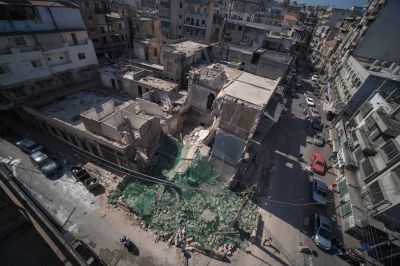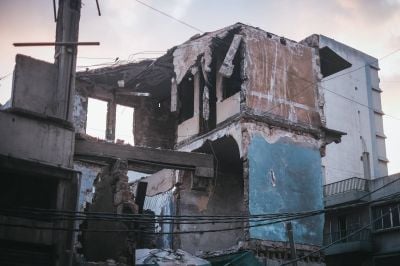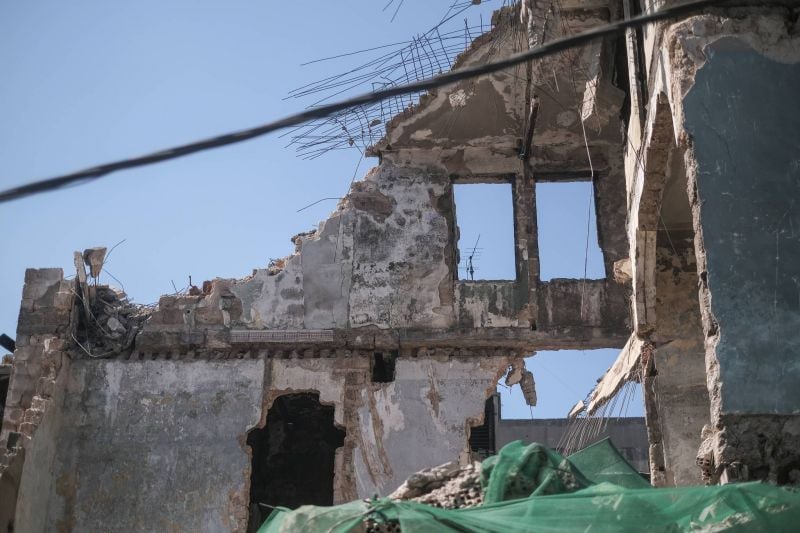
Remains of destroyed building in Zahriyeh, Tripoli, Sept. 21 (Credit: João Sousa/L'Orient Today)
BEIRUT — The streets are teeming with activity. Pedestrians weave their way through sidewalks adjacent to the remaining sections of an abandoned apartment building that collapsed last Monday in the historic yet ill-preserved Zahriyeh area of Tripoli.
Half of one of the streets is cordoned off by imposing concrete barriers adorned with signs declaring "danger of collapse."
Passersby look up at the site of the collapsed building, where rubble partially spills out onto the street.
An employee at the Ministry of Culture, present at the site, tells L'Orient Today that the ministry bears the responsibility for determining what happens to the crumbled edifice and its debris. He requested anonymity as he wasn't authorized to speak on behalf of the ministry.
But what do we know about what caused the collapse? He went on to explain that efforts are underway to inspect the site and investigate further, as questions remain.
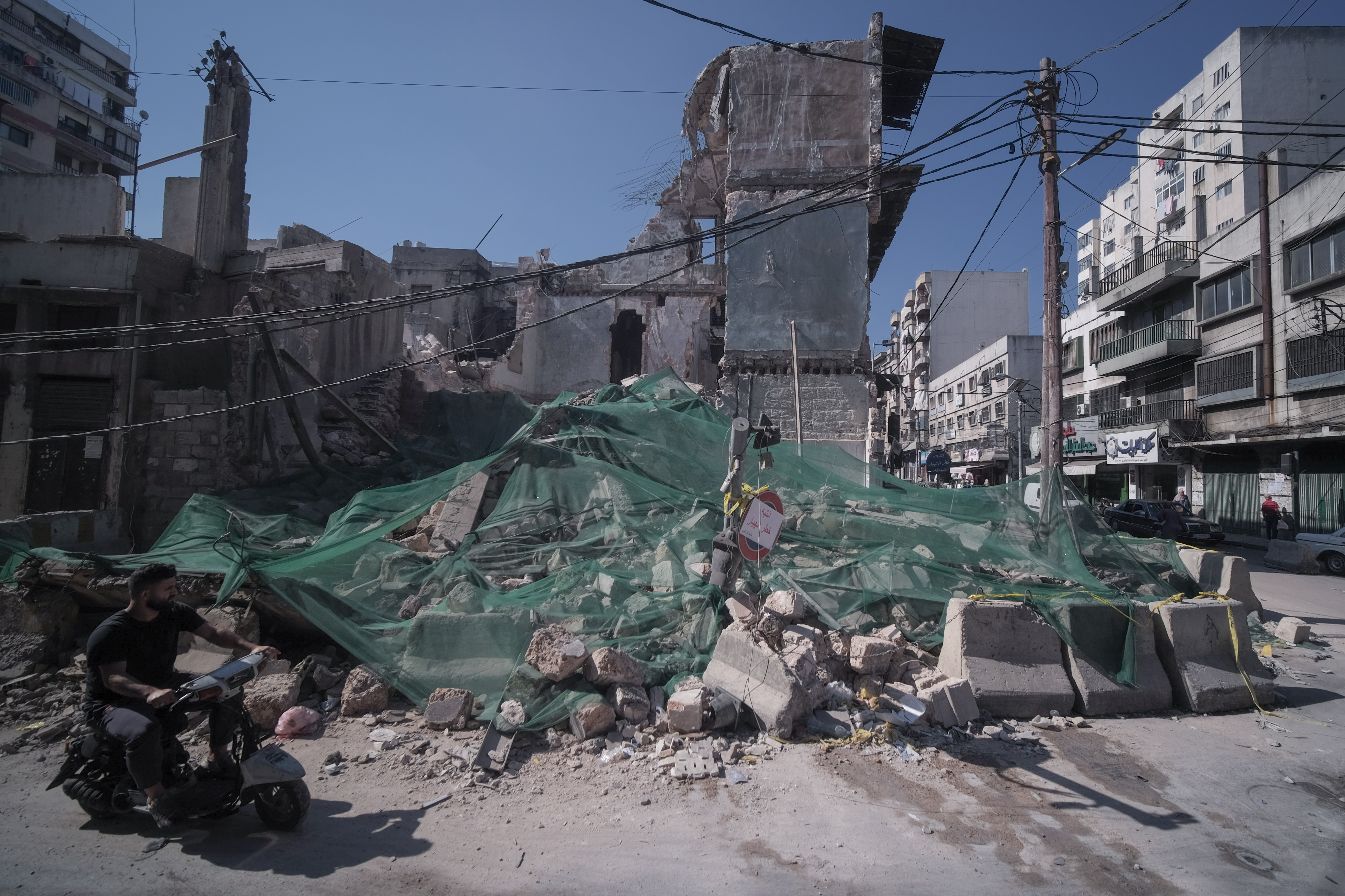 Street view of the remains of a destroyed building in Zahriyeh, Tripoli, Sept. 21. (Credit: João Sousa/L'Orient Today)
Street view of the remains of a destroyed building in Zahriyeh, Tripoli, Sept. 21. (Credit: João Sousa/L'Orient Today)
'Careful! Danger of collapse'
Local residents recall witnessing cautionary signs posted around the building by the municipality approximately four years prior, bearing the warning: "Careful! Danger of collapse." The sign was signed off by the "Municipality of Tripoli."
Tarek al-Meer, the owner of the collapsed building, says the compound is 95 years old. It had previously contained 35 apartments, all of which met their demise during Civil War between 1975 and 1990.
The Meer family, which owns the adjoining bakery, acquired the property in 2000. They say they have been grappling with "bureaucratic hurdles" since 2007, including submitting "over 40 requests" to the municipality for permission to demolish the precarious structure.
Through the services of an architect they hired, the family says they submitted a formal request for a demolition permit, which according to them, substantiated their claim that the building was on the brink of collapse.
Meer, along with the architect, Omar Kabbara, adamantly contended that the structure, despite its age, was neither a relic of historical significance nor a viable candidate for rehabilitation or reinforcement.
However, the municipality begs to differ.
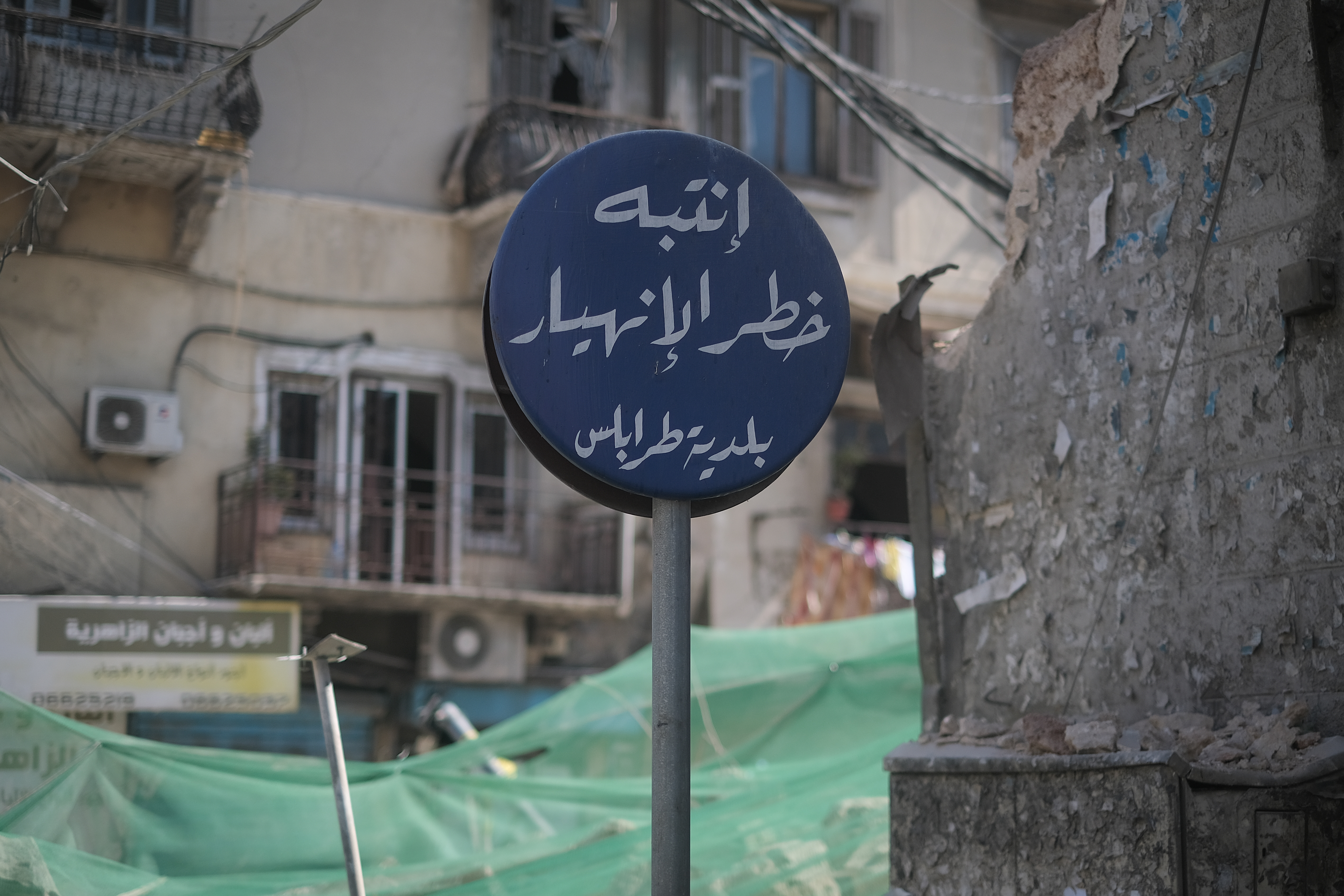 Sign warning people of potential dangers of building collapse. (Credit: João Sousa/L'Orient Today)
Sign warning people of potential dangers of building collapse. (Credit: João Sousa/L'Orient Today)
Tripoli's council claims collapse 'deliberate'
Khaled Tadmori, a member of Tripoli's City Council and Chairman of the Municipality's Heritage and Historical Relics sub-committee, claims that the collapse of the nearly century-old building last Monday was "deliberate."
He says that the structure is categorized "historical," and that "despite its contractor's persistent requests to be granted a municipal permit to demolish it, he was never granted one."
The municipality had demanded that the man rehabilitate the structure, granting him the freedom to introduce new designs or materials, but the contractor insisted on demolishing the structure, according to Tadmori.
Tadmori claims that Meer "messed with the building structure day after day before it collapsed," according to footage shared across social media platforms, which L'Orient Today could not verify.
Meer denies the municipality's accusations, adding that the videos circulating on social media are "fake." Tarek al-Meer's son, whom L'Orient Today found present near the building site last week, says that his family had nothing to do with the building’s collapse. “How could we trigger a building to collapse and there are people passing by who could die? We could never bear such guilt.”
Meer adds that the compound was severely impacted by the Feb. 6 earthquake and that the family has been urging the municipality to do something about it, fiercely pushing for a demolition permit in the months since.
Now he says he is waiting on the municipality to haul out the building's debris as he himself cannot proceed with anything without a permit.
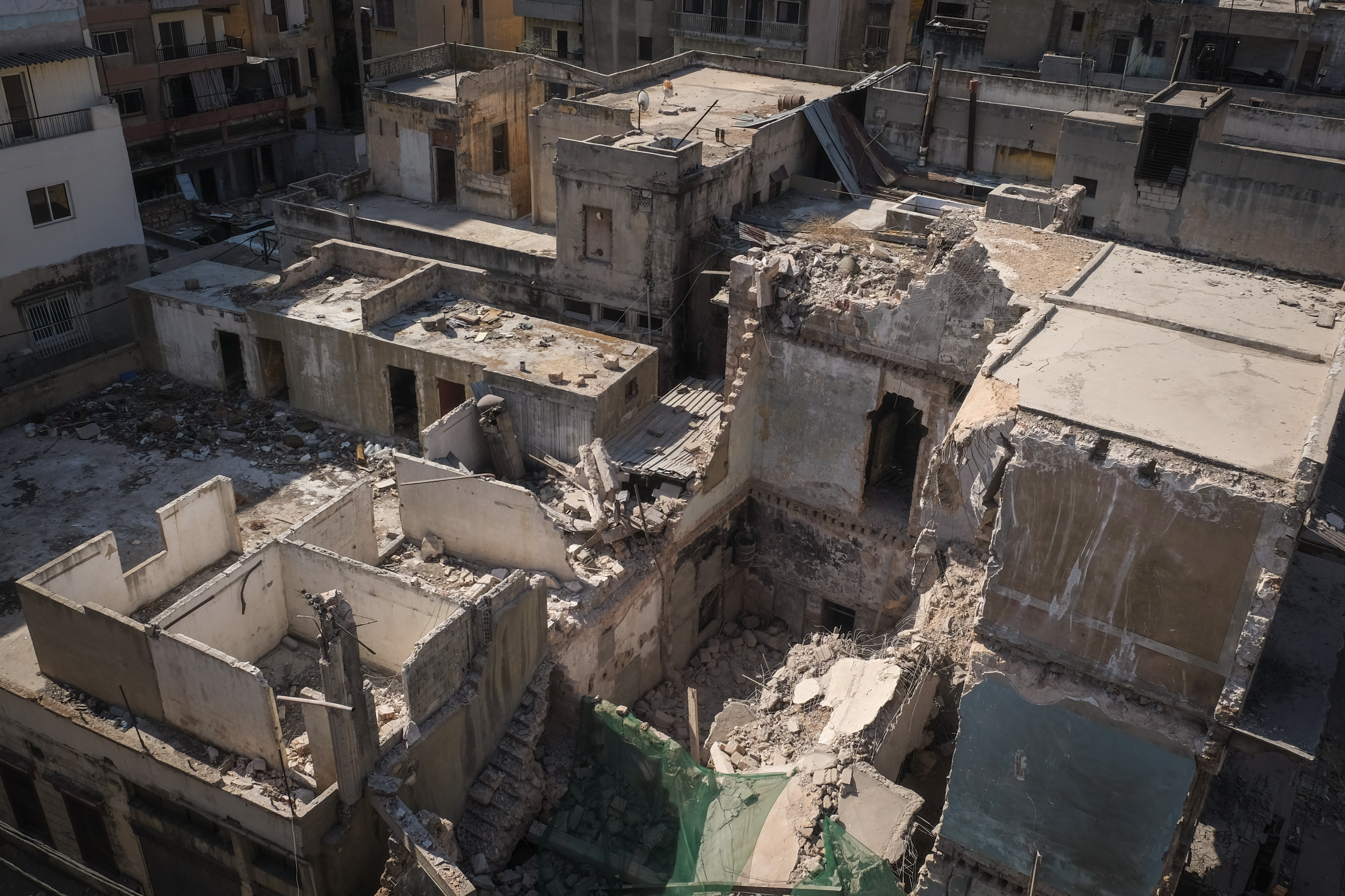 A view of the partially collapsed building from a neighbor's home. (Credit: João Sousa/L'Orient Today)
A view of the partially collapsed building from a neighbor's home. (Credit: João Sousa/L'Orient Today)
Architect Omar Kabbara, assigned by the collapsed building's owners to inspect the premises, told L'Orient Today that the building "lies in a neighborhood of a historic nature but the Culture Ministry has not listed the building itself as 'historic.'"
Caretaker Culture Minister Mohammad Mortada did not immediately respond to requests for comment.
Rest of the building at risk of collapsing
Kabbara explains that the premises is a compound comprising several blocks, only three of which crumbled last Monday. The remaining sections still risk collapse.
A bustling main street adjacent to the property was closed off following the collapse, though partially reopened just days later, with dozens of cars, motorcycles and pedestrians passing through by the minute.
Kabbara says he has submitted a report to the public prosecution explaining that the remaining sections of the structure could soon fall.
Reporting contributed by Madeline Edwards
